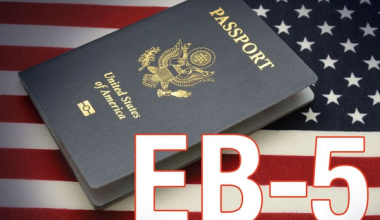Studying in the United States as an international student is a remarkable and transformative experience that opens doors to a world of educational and cultural opportunities. With its diverse range of institutions, high academic standards, and rich cultural tapestry, the United States has long been a magnet for international students seeking a world-class education.
This post will provide an overview of the key aspects and benefits of pursuing higher education in USA as a foreign student, offering insights into the academic landscape, cultural diversity, and the essential steps to embark on this exciting journey.
The United States boasts a reputation for having some of the world’s most prestigious universities and colleges, offering a wide array of programs and degrees across various disciplines. Whether you’re interested in cutting-edge technology, liberal arts, business, or the sciences, there’s a suitable academic institution to nurture your passions and talents.
Moreover, the American education system encourages critical thinking, research, and innovation. This approach equips students with the skills and knowledge necessary to thrive in an ever-changing global job market. Whether it’s state-of-the-art research facilities, world-renowned faculty, or a vibrant entrepreneurial ecosystem, the opportunities for personal and academic growth are abundant.
To embark on your journey of studying in USA as a foreign student, you’ll need to navigate the complex admissions process, secure the necessary visas, and plan for the financial aspects. This can be both exciting and challenging, but with careful preparation and guidance, it is entirely achievable. This introduction serves as a stepping stone for understanding the myriad elements involved in this venture.
In the subsequent sections of this guide, we’ll delve deeper into the various components of studying in USA as a foreign student. We’ll discuss the application process, financial considerations, scholarships and funding options, the different types of visas required, and offer insights into the unique experiences and challenges international students may encounter during their academic journey in the United States.
So, whether you’re an aspiring scholar looking to advance your education, expand your cultural horizons, or embark on an adventure of a lifetime, studying in the USA as a foreign student is a fulfilling and enriching experience that promises growth, discovery, and endless opportunities.
How To Study In USA As an International Student
Studying in the USA as a foreign student can be an exciting and rewarding experience, but it also requires careful planning and adherence to various requirements.
Here’s a step-by-step guide on how to study in USA as a foreign student:
1. Determine Your Educational Goals:
Decide on the level of education you want to pursue (undergraduate, graduate, or non-degree programs).
Choose a field of study and research universities that offer relevant programs.
2. Research Universities:
Research and create a list of universities that match your academic and personal preferences.
Consider factors like location, cost, program reputation, and admission requirements.
3. Financial Planning:
Calculate your estimated expenses for tuition, living costs, and other expenses.
Research scholarships, grants, and financial aid options available to international students.
4. English Proficiency:
Most universities in the USA require proof of English proficiency. You may need to take tests like TOEFL or IELTS.
5. Standardized Tests:
Depending on your intended program, you may need to take standardized tests like the SAT, GRE, or GMAT.
6. Apply for Admission:
Complete application forms and submit required documents (transcripts, letters of recommendation, essays, etc.) to the universities of your choice.
Pay application fees, which can vary from one university to another.
7. Visa Application:
Once you receive an acceptance letter from a U.S. university, you’ll need to apply for a student visa (typically an F-1 or M-1 visa).
You’ll need to pay the SEVIS fee and schedule a visa interview at the nearest U.S. embassy or consulate.
8. Financial Documentation:
Prepare financial documents to demonstrate your ability to cover tuition and living expenses while in USA. This is essential for the visa application.
9. Health Insurance:
Many universities require international students to have health insurance. Check the university’s policy and obtain the necessary coverage.
10. Travel Arrangements:
Book your flight and plan your arrival in USA.
11. Housing:
Arrange for housing either on-campus or off-campus. Some universities offer on-campus housing for international students.
12. Orientation:
Attend the university’s orientation program for international students to get acclimated to the campus and meet fellow students.
13. Maintaining Visa Status:
Comply with the visa regulations, which may include maintaining a full course load, reporting changes in address or academic status, and renewing your visa when necessary.
14. Work Authorization:
Understand the regulations for working as an international student, as there are limitations on employment in the USA.
15. Cultural Adjustment:
Be prepared for cultural adjustments and seek support from the university’s international student office.
16. Stay Informed:
Keep yourself updated on immigration regulations, university policies, and any changes in your program or personal circumstances.
Perks Of Studying In USA As An International Student
Studying in USA as an international student offers numerous benefits. Here are some of the key advantages:
1. High-Quality Education:
USA is home to many prestigious universities and colleges known for their academic excellence. You can access a wide range of programs and courses, ensuring that you receive a high-quality education.
2. Diverse Culture:
Studying in USA exposes you to a diverse and multicultural environment. You’ll have the opportunity to interact with students from all over the world, which can broaden your perspective and help you develop a global mindset.
3. Research Opportunities:
US universities are at the forefront of research and innovation. As a student, you can engage in cutting-edge research projects and gain valuable hands-on experience.
4. Work Opportunities:
International students in USA can often work on campus and, in some cases, off-campus. Optional Practical Training (OPT) and Curricular Practical Training (CPT) programs provide opportunities for gaining work experience in your field of study.
5. Networking:
USA offers excellent networking opportunities. You can connect with professors, industry professionals, and fellow students, which can be beneficial for your career.
6. English Language Proficiency:
If English is not your first language, studying in USA can significantly improve your language skills, as you’ll be immersed in an English-speaking environment.
7. Global Recognition:
Degrees from US universities are highly regarded worldwide. Having a US education on your resume can open doors to job opportunities and further education globally.
8. Cultural Experience:
Beyond the classroom, you can experience the rich cultural diversity of USA, from its cuisine to its traditions. This can be a life-enriching experience.
9. Scholarships and Financial Aid:
Many US universities offer scholarships and financial aid to international students, helping to make education more affordable.
10. Global Perspective:
Exposure to American culture and society can provide you with a unique perspective on global affairs, which can be valuable in an increasingly interconnected world.
11. Safety and Security:
USA is generally considered a safe place to live and study, with a low crime rate in many areas.
12. Student Services:
US universities typically offer comprehensive support services for international students, including assistance with visas, housing, and academic advising.
13. Post-Graduation Opportunities:
USA provides various opportunities for international students to extend their stay after graduation, such as the H-1B visa for employment.
Universities Offering Scholarships To International Students In USA
Many universities in the United States offer scholarships to international students to help them pursue their higher education. These scholarships can be merit-based, need-based, or specific to certain fields of study.
Here are some universities known for offering scholarships to international students:
1. Harvard University:
Harvard provides need-based financial aid to international students, including full tuition and living expenses for those with demonstrated need.
2. Stanford University:
Stanford offers financial aid to international students based on need. They also have a limited number of scholarships for exceptional students.
3. Massachusetts Institute of Technology (MIT):
MIT provides need-based financial aid to international undergraduate students.
4. Yale University:
Yale offers need-based financial aid to international students. The university is committed to meeting 100% of demonstrated need.
5. Princeton University:
Princeton has a generous financial aid program for international students, including full tuition, room, and board for those who qualify.
6. Columbia University:
Columbia offers need-based financial aid to international students, and they are committed to meeting 100% of demonstrated need.
7. University of Chicago:
The University of Chicago provides need-based financial aid to international students, including full tuition for students from families with an income below a certain threshold.
8. University of Pennsylvania:
The University of Pennsylvania offers need-based aid to international students, including grants and work-study opportunities.
9. Cornell University:
Cornell provides need-based financial aid to international students, and they meet 100% of demonstrated need for admitted students.
10. Duke University:
Duke offers financial aid to international students, including merit-based scholarships and need-based grants.
11. Brown University:
Brown provides need-based financial aid to international students and is committed to meeting 100% of demonstrated need.
12. University of California System:
Some campuses within the University of California system offer scholarships to international students. Specific opportunities and eligibility criteria may vary by campus.
13. New York University (NYU):
NYU offers various scholarships and financial aid options for international students.
14. Michigan State University:
Michigan State has several scholarships for international students, both merit-based and need-based.
15. University of Minnesota:
The University of Minnesota offers scholarships to international undergraduate and graduate students.
16. University of Florida:
The University of Florida provides various scholarships to international students based on academic merit and other criteria.
17. Texas A&M University:
Texas A&M offers scholarships to international students, including the International Student Grant and the International Education Fee Scholarship.
18. University of Arkansas:
The University of Arkansas offers a variety of scholarships for international students at the undergraduate and graduate levels.
19. Emory University:
Emory provides need-based financial aid to international students and also offers a few merit-based scholarships.
How To Get A Job In USA After Study
Getting a job in USA after studying there as an international student can be a challenging process, but it’s certainly possible with the right approach.
Here are the general steps to help you find a job in USA after your studies:
1. Understand Your Visa Status:
Ensure that you understand your visa status. Most international students in USA are on an F-1 visa, which typically allows for Optional Practical Training (OPT). OPT allows you to work in your field of study for a specified period after graduation.
2. Networking:
Networking is crucial in USA job market. Attend career fairs, join professional associations, and connect with professors, fellow students, and alumni. Utilize LinkedIn and other social media platforms to build your professional network.
3. Career Services at Your University:
Most universities have career services departments that can help you with job searches, resume building, and interview preparation. Take advantage of these resources.
4. Internships:
Consider doing internships during your studies. Many companies use internships as a way to evaluate potential future employees. An internship can be a stepping stone to a full-time job.
5. Job Search:
Use various job search platforms such as LinkedIn, Indeed, Glassdoor, and company websites. Tailor your resume and cover letter for each job application to match the job requirements.
6. Work on Your Resume:
Your resume should highlight your skills, experience, and achievements. Ensure that it conforms to U.S. standards and is well-tailored to the job you are applying for.
7. Prepare for Interviews:
Be ready for interviews. Practice your interviewing skills, and research the companies you are interviewing with. Be prepared to discuss your qualifications and how you can contribute to the company.
8. Work Authorization:
Make sure your visa status allows you to work. If you are on an F-1 visa, apply for OPT before your program completion. If you need additional work authorization, you may need to explore options like the H-1B visa or employer-sponsored green cards.
9. Leverage On-Campus Resources:
Use your university’s resources, including job placement services, alumni networks, and career counselors.
10. Apply for Jobs Strategically:
Apply for jobs that align with your skills and interests. It’s often more effective to target a few positions that are a good fit for you rather than sending out numerous generic applications.
11. Stay Informed on Immigration Policies:
Keep up to date with immigration policies and regulations, as they can impact your ability to work in USA.
12. Stay Persistent:
Job hunting can be challenging, and it may take some time to land a job. Stay persistent and don’t get discouraged by rejection. Keep improving your skills and network.
13. Legal Compliance:
Ensure that you are in compliance with all U.S. laws and regulations regarding employment for international students.
Frequently Asked Questions
1. What are the basic requirements for studying in USA as an international student?
To study in USA, you typically need to apply and be accepted by a U.S. educational institution, obtain a student visa (F-1 or J-1), demonstrate your ability to cover tuition and living expenses, and meet any specific admission requirements of the institution you’re applying to.
2. How can I find the right U.S. college or university for me?
You can research universities and colleges in USA based on your field of study, location preference, budget, and other factors. Websites like the College Board, US News & World Report, and individual university websites can be helpful in your search.
3. What are the most popular study destinations in USA?
Some popular study destinations in USA include cities like New York, Los Angeles, Boston, and San Francisco, as well as renowned academic hubs like Boston, the Research Triangle in North Carolina, and the Silicon Valley area in California.
4. How do I apply for a student visa to study in USA?
To apply for a student visa (F-1 or J-1), you typically need to obtain an I-20 or DS-2019 form from your U.S. school, pay the SEVIS fee, complete the DS-160 application, and schedule an interview at a U.S. embassy or consulate.
5. What are the costs associated with studying in USA as a international student?
The costs can vary widely depending on the institution and location. You will need to budget for tuition, housing, food, books, transportation, health insurance, and other living expenses. Scholarships and financial aid can help offset some of these costs.
6. Can I work while studying in USA as a foreign student?
Yes, international students in USA can work on-campus up to 20 hours per week during the academic year and full-time during breaks. Optional Practical Training (OPT) allows for off-campus work related to your field of study after completing a program.
7. What are the language proficiency requirements for international students?
Many U.S. universities require international students to demonstrate English proficiency through exams like TOEFL or IELTS. Some institutions may offer English language programs to help you meet these requirements.
8. Can I stay in USA after graduation to work?
Yes, you can apply for Optional Practical Training (OPT) after completing your degree, which allows you to work in your field of study for up to 12 months. Some STEM graduates may qualify for a 24-month extension.
Final Note
In conclusion, studying in USA as an international student is an enriching and transformative experience that offers numerous opportunities for personal and academic growth. The United States boasts a diverse range of institutions, world-class faculty, and a welcoming environment for international students. The exposure to different cultures and the chance to build a global network can be invaluable for one’s future.
However, it is essential to consider factors such as the cost of education and the challenges of adjusting to a new culture. With proper planning and a commitment to your educational and personal goals, studying in USA can open doors to a brighter future and a more global perspective. It’s a journey that requires dedication, but the potential rewards in terms of education and personal development are well worth the effort.
Remember that the job search process may take time, and it’s essential to remain patient and proactive. Seek advice from your university’s career services, faculty, and other international students who have successfully navigated this process. Additionally, consulting with an immigration attorney can provide guidance on your specific situation and visa options for working in USA.
Please note that scholarship availability and eligibility criteria may change over time, so it’s important to check the official websites of these universities for the most up-to-date information and application deadlines. Additionally, there are many other universities and colleges in the United States that offer scholarships to international students, so it’s a good idea to explore a wide range of options when searching for financial aid opportunities.






